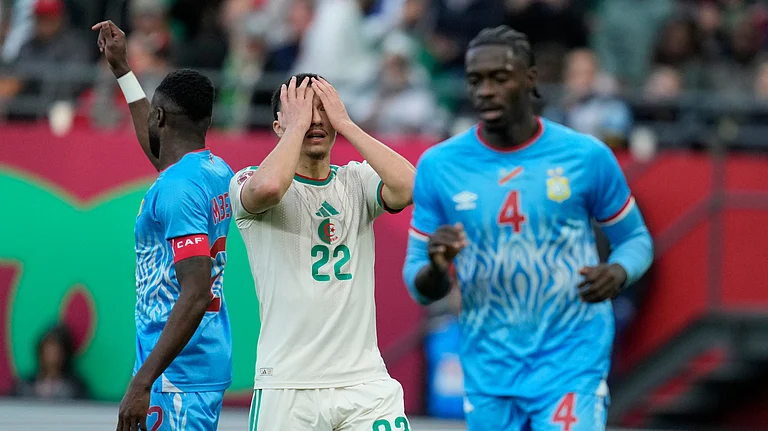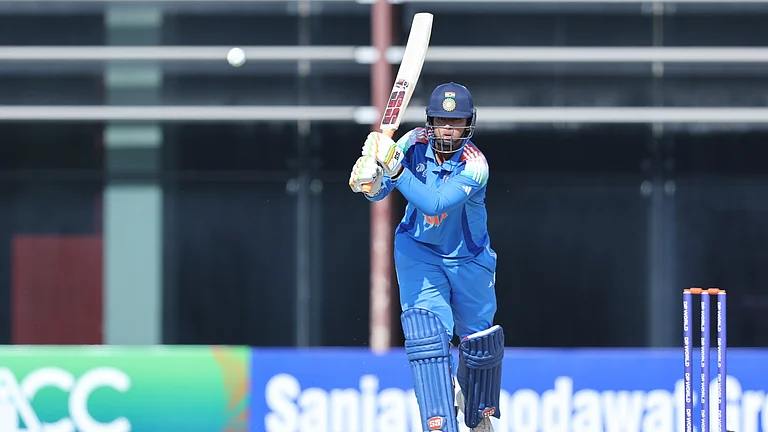“Oh, you are here. Nayantara is getting ready still. Please wait here in the office”. As we entered the Director’s chamber in the children’s centre in an industrial part of north Delhi on that crisp November morning a dozen years ago, the moments of waiting for Nayantara seemed to stretch out interminably. Then right in the middle of our half-hearted small talk with the official-looking people in the room, we stopped in mid-sentence as we heard a tiny roar of voices and a swift swoosh as the curtains parted. A bundled baby was carried proudly into the room by a beaming nurse. I could see a nice head of hair that had been abundantly and freshly oiled, the smallest of noses, and a light blue cotton onesie with little cars and trains printed on it, no doubt picked out for the special occasion. My cousin Vatsala’s sage voice rang in my ears. “Didda, don’t get put off by the hair oil”. Before I knew it, Nayantara was in my arms, and I was almost blinded by her million-watt smile and the spray of dimples all over her face. “She looks just like you”, said the adoption officer triumphantly. Did she know I used to dream of a girl with dimples?
Not because of, but perhaps in spite of what the adoption officer told me, I find myself ever so often tracing my fingers across my daughter’s face while she sleeps gently next to me. I marvel at her perfect little nose that has now filled out, her shapely light-brown eyebrows, her lengthening body, and the fading blue birthmarks that once took up the entirety of her back. From this proximity, I can pretend she is mine. At other times, I see her whizzing past me as she picks up the phone to text a friend whose grandfather is unwell. I try to take a peek at her comforting words. She seems to know and understand loss, instinctively. They say loss of separation from our mother’s body is imprinted on our own bodies even before we develop consciousness. It is a primal wound.
There are other times I find myself gazing at her eyes full of wonder and life. Both in the moments that I look at her when she is not looking back, and in those when she is, I see myself and my other. Her mother. Like Krishna with more than one mother. That is how Lila became her first name.

The writer with her adopted child
In those stolen glances, I glimpse my mother. My daughter’s resilience, her love of life, her ability to make friends across all differences, her courage to speak her mind and to make herself vulnerable, these are all my mother’s qualities, not mine. Perhaps I willed this when my mother’s first name became her last name. It became a way of defying the law of bio-genetic and legal inheritance, property, and ownership.
If, as one is told, producing a child biologically comes from the desire to replicate oneself and to feel recognised in the world, adoption is its very opposite. There is no gene pool to take pride in, or to despair over. There is no way of knowing how tall my daughter will grow, whether her IQ matches ours, whether she will savour an intellectual life like her parents, or what bodily infirmities she may be saddled with when she becomes an old person. We know people who fear adoption because there are no markers of caste or religion. Or guarantees of worldly achievement. Or the smug satisfaction of superior genes. Adoption is a riotously impure act.
I recently read a philosopher Danielle LaSusa in The New York Times who was musing about her fear regarding her daughter’s mortality. She wrote: “not even a doctorate in philosophy prepared me for the physical and existential dread I would feel when tasked with protecting this fragile, new creature. I felt the constant hum of anxiety throughout my pregnancy. What if it became unviable? What if it ended in stillbirth? When my daughter arrived slick, headfirst out of me, my fear of death bubbled to the surface and transferred from my own body onto hers”.
This idea of the singular body of mother and child is at the heart of all narratives of biological motherhood. Dreaming of a child, it seems, is no match for physically bearing her for nine months. Long ago, as I broken-heartedly gazed at my mother’s dead body in a bleak hospital room in Patna, through all my tears, I dreamt of Lila. That is how I confronted my existential crisis of being unmothered.
Most days, however, my thoughts are not so heavy. I am just a very ordinary mother. I nag my daughter to tidy up her room, fret about her preparation for exams, worry she is not a bookworm like I was at her age. But I am also glad she is not a tragedy queen, a role I revelled in as a teenager. On any given day her activities fill up my day, as I balance my life as an academic and her homework, cricket training and Kathak dance rehearsals. She has talents I could never have dreamt of. When I comment on how her one-foot chakkar needs more practice, or that she forgot to proof-read her essay submission, she rolls her eyes and forwards me Whatsapp jokes about desi mothers. For a while she had also taken to avidly watching Lilly Singh’s comic sketches on her Indian immigrant parents in Canada. It did make me wonder, in a paranoid sort of way, if I had become the stereotypical desi mother after all. Hopefully I am just an ordinary mother, and that is a relief.
When Lila was a child, we had a favourite book that we read together. The Monkey Puzzle is about a baby monkey who has lost his mother in the jungle. A butterfly comes to help him out. But the butterfly needs clues about what the monkey’s mother looks like. When the baby says his mother is big, she takes him to an elephant. When he says his mother coils around trees, he is taken to a snake. When he protests that his mother has legs, the butterfly takes him to a spider. The search seems to be going nowhere. Finally, the baby monkey cries out in desperation: “Butterfly, butterfly, can’t you see? None of these creatures looks like me!” For the butterfly this is news because as she says matter-of-factly, “none of my babies look like me!” In my lofty way, I thought the story would help Lila and me navigate the orthodoxies of motherhood and genetic inheritance. For Lila, though, the story’s happy ending in which the baby monkey is reunited with his monkey family, was what the story was about. A story about losing and finding love and cuddles.
Recently I read a quotation from the Norwegian children’s writer Jostein Gaarder who wrote of Socrates whose mother was a midwife. Gaarder suggests that Socrates thought of his art as analogous to the art of the midwife who does not herself give birth to the child but helps bring the child into the world. For the philosopher, the task was to help people give birth to understanding, one that comes from the body but gains meaning only in the world. Perhaps then adoption is a giant monkey puzzle whose pieces we put together to make meaning in a world where the only guarantee must be love. And cuddles.
(This appeared in the print edition as "Monkey Puzzle")
(Views expressed are personal)
ALSO READ
Rashmi Verma teaches English and Comparative Literary Studies at the University of Warwick
























